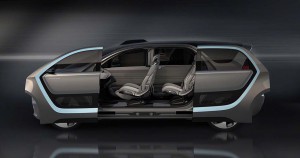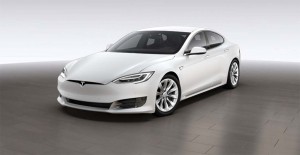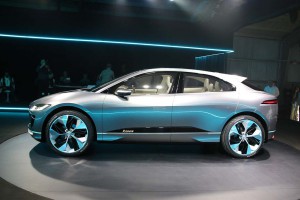You can call it a minivan, if you wish, but while the Portal shares the same, underlying platform as the Chrysler Pacifica minivan that debuted last year, they don’t have much else in common.
There are the four sliding doors, for example, and the unusually short nose. Though it’s a full 19 inches shorter than the Pacifica, the Portal boasts a larger interior. It also has a steering wheel that, with a touch of a button, folds into the instrument panel.
The Portal is, for now, just a concept vehicle, but it hints at some of the dramatic changes reshaping the auto industry as manufacturers start to adopt electrified drivelines and prepare to introduce autonomous driving systems. Both those technologies will, in turn, give automotive designers an opportunity to radically shift the way tomorrow’s vehicle look and are laid out, says Ralph Gilles, the head of design for Fiat Chrysler Automobiles.
“We’re dreaming about the future,” and the opportunities these technologies offer, said Gilles, during a keynote speech at the Chicago Auto Show this week. “We’re excited about what electric propulsion will do to car design.”
(Chrysler Portal Concept opens doors to Millennials. Click Here for a closer look.)
The Tesla Model S is already demonstrating some of the changes these new technologies will bring to automotive design. In recent years, automakers have been introducing larger and larger grilles on their gas and diesel-powered models. But there’s virtually no grille at all on Tesla’s electric sedan. No need. It requires far less airflow to keep its batteries cooled than an internal combustion engine requires.
The Faraday Future FF91, a battery-electric crossover set to go into production in 2018, goes a step further. Since its batteries and motors are mounted into its skateboard-like platform, there’s no need for a conventional engine compartment. That space can be transformed into cargo and passenger space.
(Click Here to check out the Faraday Future FF91.)
Jaguar has taken a similar approach with the I-Pace concept that it unveiled at the Los Angeles Auto Show last autumn.
“Electrification gives us the opportunity to tear up the rulebook,” said Ian Callum, Jaguar’s design director, during a media background briefing in L.A. “It allows us freedom of design like never before.”
In designer speak, this skateboard-like layout is sometimes referred to as a “chocolate platform,” said Leo Natterer, a Volkswagen interior designer. And since this approach is likely to be adapted by most future electric vehicles, expect to see them downsize their “footprint,” while radically expanding their cabins – compact models will offer midsize, even full-size interiors.
That said, squeezing all key powertrain components into the floor of an electric vehicles means “they will tend to sit higher” than conventional passenger cars,” noted Natterer, during a Chicago Auto Show conversation. So, the shift towards electric propulsion will also mean that the industry will continue migrating from sedans and coupes to crossover- and sport-utility vehicle body designs.
The coming era of autonomous and fully driverless vehicles will take things even further, said Chrysler’s Gilles. The Portal’s foldaway steering wheel means that when the concept is shifted to autonomous mode the cabin can be turned into what he calls “the third space…a social hub.”
(For more on the Jaguar I-Pace, Click Here.)
Chrysler is by no means the only automaker exploring that option. The Mercedes-Benz F 015 concept features front seats that can swivel around to transform the cabin into a mobile living room. The Rolls-Royce Vision 100 concept has a single, plushly padded bench seat that looks forward onto a giant video screen. Some recent concepts have been replaced conventional windows with new high-tech glass. They can switch from transparent – giving a view of the outside world – to video displays. Drive through a bad neighborhood and turn on moving images of a drive through a mountain pass.
“As a designer, I’m motivated by all of this,” said Gilles, though he also acknowledged that designers will have to do a lot more than just come up with pretty designs in the years ahead. They will have to learn to incorporate technologies lifted right out of the world of science fiction and find a way to make them a part of our everyday driving.



